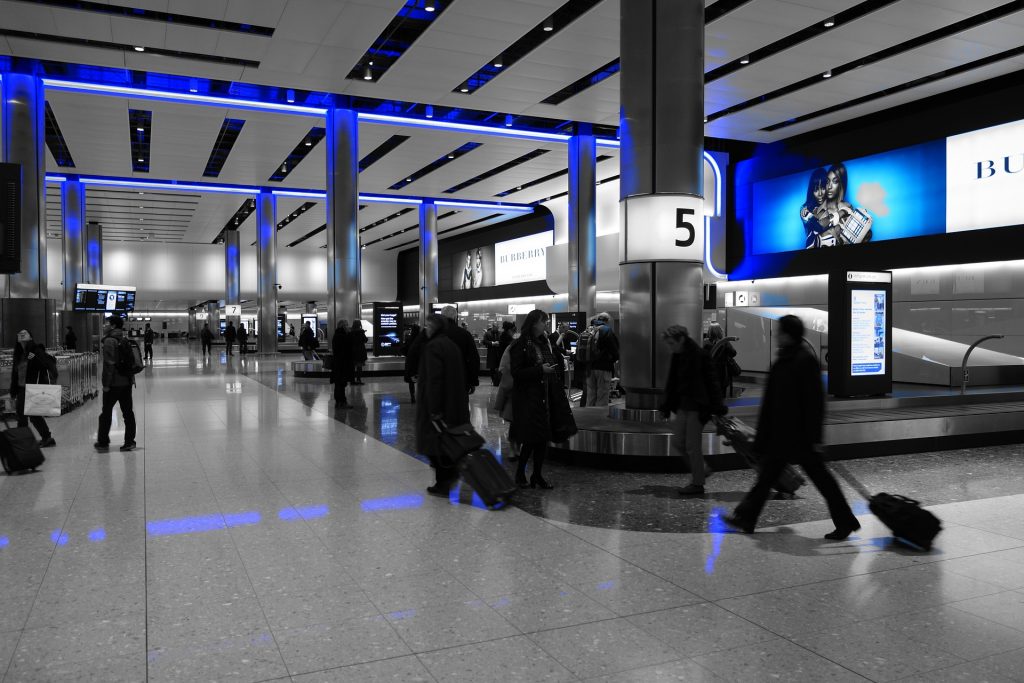
Virtual Twin technology is already an imperative for many industries and delivering value and return. Airports should evolve beyond Geographic Information System (GIS) from analytic to holistic decision making.
As an early technology pioneer, Jerry implemented a GIS system in Orlando International Airport. The technology was just emerging on the scene and the value propositions were aspirational at best. A cool looking map was interesting, but not enough. It wasn’t until the program focused on “actionable data” that progress was made. The GIS program paid for itself many times over and became a central part of the planning processes at the airport. The next evolution to holistic decision making and simulation remained just out of reach. New tools, technology, and new approaches were needed.
In many industries holistic decision making is now real thanks to 3D spatially enabled tool sets. Today, decisions must be made much faster and with greater confidence to meet growing challenges. In order to adapt to the complexity, there is a fundamental shift from linear thinking (analytics) to systems thinking (innovation) that underpins the value proposition. Now, “actionable data” can happen in real-time and will drive out holistic decision making. Airports will leverage virtual twins to demonstrate how a change is modeled across the full life-cycle of the airport. Upstream and downstream consequences will be more fully revealed and fewer “Gotchas” will happen.
Making this shift to holistic and automated decision making is necessary to build and operate the airport of the 21st century. These new techniques will put passenger experience and innovation at the forefront. Executives will be able to effectively initiate and deliver on top-down vision, goals, and service expectations with real data to back it up.
Digital Twin Evolving to Virtual Twin

Tomorrow’s airport cannot be achieved with yesterday’s solutions. With today’s old airport technology, the challenges will be difficult to overcome. In all the pressures an airport is experiencing it is important to see these challenges as an opportunity to significantly change for the better.
These new techniques will put passenger experience and innovation at the forefront.
Digital Twin technology and the application to an airport is an emerging topic and for good reason. However, a virtual twin goes beyond the digital twin technology. When incorporated as part of a platform environment, a virtual twin enables companies to create a consistent and comprehensive experience for all stakeholders, from design and construction through marketing, sales, operation and servicing. Overall, it helps to better understand what is being delivered versus what was designed, tightening the loop between design and actual operation. Simply stated, did it perform as designed?
For illustration, take an airport that exists in the physical world and equipped with sensors. Now, this sensor data is incorporated with the airport’s 3D model’s layout of mechanical equipment, electrical and HVAC systems, simulation performance data, operational data, and everything else essential there is to know about the airport. Then real-world data interacts with the 3D model and updates it in real time. What you now have is a dynamic mirror of the airport: a Virtual twin.
Now the Virtual twin could reveal insight into optimizing the airport’s performance. Such twins could simulate a day of operation and no real-world test required. In fact, Virtual twins are already being used for this purpose today—if they weren’t, physical autonomous vehicles would have to drive an estimated 14 billion kilometers to validate their performance. An airport can optimize its performance and passenger journey by running many iterations based on real data in the virtual world before putting into operation. Reduced risk, proven optimized designs, and higher confidence are the value propositions.
Embracing this new virtual twin technology will enable airports to achieve their innovation goals. Fortunately, there are solid examples from other industries that can be leveraged.
The virtual twin encapsulates the overall airport’s life cycle. There are five elements where a virtual twin is of benefit to airports.
1. Ideation
Airports are continuously seeking for new ideas to make airports more than infrastructures, but real living places. One of the routes to improving the journey is by creating a 3D virtual experience, simulate the idea and validate its benefits. This 3D virtual experience can then be used to communicate with airport stakeholders to secure necessary capital funding. The value proposition is that stakeholders have higher confidence early on that money will be spent wisely and the decision cycle can be radically shortened from years to weeks.
2. Design and Engineering
The Virtual Twin provides a collaborative environment to federate all supplier deliverables around a unique 3D mock-up to converge much faster on final design. Then verify and validate the subcontractors design conditions and physical dimensions. The conformance of the final 3D design to initial requirements and FAA regulations can be readily shown. Tenants will benefit from a better controlled process and can achieve on plan, on cost, on time delivery. Failure to do so will increase design cost and reduce design quality of the terminal, which will increase overall airport CAPEX and OPEX.
3. Construction
By leveraging the Virtual Twin, project delivery teams are able to simulate how construction or renovations impact airport operations software. The overall operational impact of taking major infrastructure out of service, such as a terminal, can be simulated. Once evaluated then an effective and proactive operational plan can be put in place to minimize disruption.
4. Sales and Marketing
There are many opportunities for marketing opened up by the Virtual Twin. The first is to entertain and make the passenger’s journey more enjoyable. The second one is to increase revenue. The third opportunity is to bring innovations into improving passenger experience.

There are many opportunities for marketing opened up by the Virtual Twin.
The passenger’s journey is made more enjoyable by leveraging the virtual twin to create AR and VR applications. Airports can increase revenues by being able to create a virtual shopping experience. Marketing can validate the passenger experience elements as well as explore new innovative concepts in a virtual environment. Additionally, employing Virtual Twin eliminates the need for real photo shoots and costly film sets for a new marketing campaign.
5. Operations (Maintenance and passenger flow)
There are two primary operational roles for the Virtual Twin – Maintenance and Operations.
In the maintenance field the Virtual Twin provides a platform to monitor and analyze sensor information to predict an asset failure. Further, it provides a diagnostic tool by simulating what went wrong. All this information is captured and communicated in 3D to the field via the Work Order to accelerate investigation and reduce maintenance costs.
In the Operations arena the simulation in 3D provides a better understanding for daily operations. It provides a holistic, 3D view on how planning interacts with airport activities such as construction, renovation or other events which may cause irregular operations. Mitigation scenarios can be simulated to address the impacts and shorten times to recovery. This avoids costs and delays such as turn-around times and most importantly congested passenger flows. It will be imperative that the virtual model provides a reasonable and trustworthy representation of what would happen in real life.
